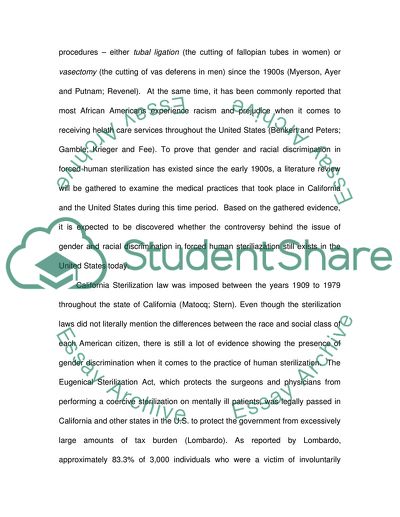Cite this document
(“Racial and Gender Discrimination and Sterilization Essay”, n.d.)
Racial and Gender Discrimination and Sterilization Essay. Retrieved from https://studentshare.org/history/1551020-can-you-please-edit-the-following-research-using-the-most-current-edition-of-the-mla-format-see-instructions
Racial and Gender Discrimination and Sterilization Essay. Retrieved from https://studentshare.org/history/1551020-can-you-please-edit-the-following-research-using-the-most-current-edition-of-the-mla-format-see-instructions
(Racial and Gender Discrimination and Sterilization Essay)
Racial and Gender Discrimination and Sterilization Essay. https://studentshare.org/history/1551020-can-you-please-edit-the-following-research-using-the-most-current-edition-of-the-mla-format-see-instructions.
Racial and Gender Discrimination and Sterilization Essay. https://studentshare.org/history/1551020-can-you-please-edit-the-following-research-using-the-most-current-edition-of-the-mla-format-see-instructions.
“Racial and Gender Discrimination and Sterilization Essay”, n.d. https://studentshare.org/history/1551020-can-you-please-edit-the-following-research-using-the-most-current-edition-of-the-mla-format-see-instructions.


